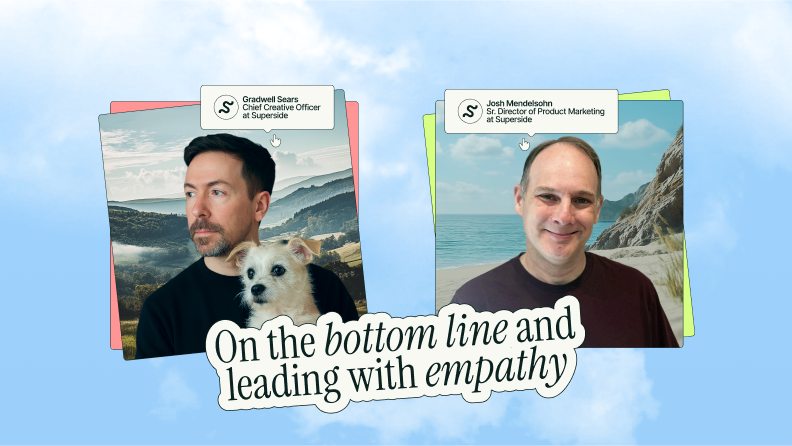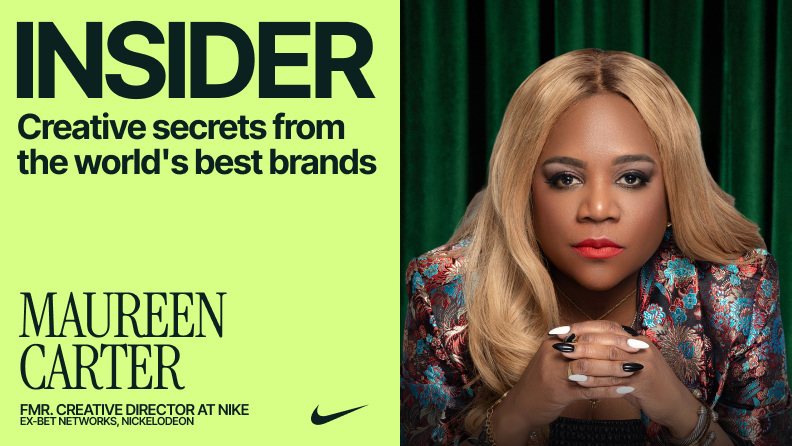10 Ways to Build a Great Creative Culture

What do you think when you hear the words ‘creative culture’? Maybe you think of an open-concept office filled with stylish furniture and quirky artwork. Or perhaps you think of some of the downsides that come with working in the creative industry, like the long hours, disorganized processes, or arrogant colleagues
In reality, fancy offices don’t define creative culture, and those toxic agency stereotypes often do more harm than good. As author and CEO of Edenspiekermann Paul Woods said in his recent Ad Designpalooza session:
“Culture is not about stuff. Culture is about people.”
Now, you might have a few questions like:
- What is a creative culture?
- Why is company culture important?
- How do you create a culture of creativity and innovation?
Fortunately for you, this article will answer all of your most pressing questions and outline 10 top tips from creative leaders on how to build a great creative culture.
What is a creative culture?
Many people often assume that company culture is all about a company’s physical space and work perks like free lunches, nap pods, or fancy holiday parties. Another assumption that people make is that creative culture is all about the hustle. You might think of shows like Mad Men, where you see people working late into the night, fine tuning designs and copy for client presentations.
The truth is that creative culture is all about your people. Your values, how your people interact with each other and work together, how you treat your employees, partners and clients – these are the aspects that make up your company culture. And while all businesses should care about creativity, if you’re in a creative industry, knowing how to create company culture with strong onboarding and an ongoing dedication to ensuring your people have everything they need to be their most creative, innovative selves is a crucial part of fostering a healthy corporate culture.
Why is company culture important?
Would you rather work for a company that cares about its employees and invests in their success and wellbeing, or one that treats its employees like crap? Easy choice, right? This is the importance of company culture. When employees trust their employers, have pride in what they do, and get along with their colleagues, they’re happier, more productive and engaged, and much more likely to stick around for the long haul.
A healthy creative culture can also boost a company’s bottom line. An independent study of the 100 Best Companies found that the workplaces with the best company culture experienced a higher operating income per employee, operating margin, growth rate, and return on assets.
How do you create a culture of creativity and innovation?
So now that you know what creative culture is and why it’s important, here are a few key tips on how you can build a great one.
1. Define a core value
For Holger Hansen, Managing Director of Jung von Matt/SPORTS, the company’s core value – creative excellence – is his agency’s criteria to select new people, reward the team, and make business decisions. “When it comes to the people who work for us, we believe that we don’t just need people to sell ordinary commercials. We want people who sell quality, meaningful ideas and valuable solutions,” explains Holger.
2. Work normal hours
Overworking will put your team on the fast track to burnout. So instead, Paul recommends agencies ban weekend work and overtime and try implementing ‘Summer Fridays,’ where employees can leave early or take the day off at the end of the week. His company also provides a minimum of 20 days of vacation.
3. Build a diverse team
As Oz Alon, CEO and Co-founder of HoneyBook, writes for Entrepreneur: “Unless you’re trying to re-create a Ford factory model, more carbon copies aren’t the key to creating an innovative company.” Instead, he recommends creative leaders aim for diversity diversity and inclusion, bringing in team members with a wide range of work experience, education and cultural backgrounds.
4. Stop micromanaging
If you feel the need to micromanage your employees, Paul says that means you need to brush up on your leadership skills, or your team isn’t very good at their jobs. Either way, something’s not working. “The idea is to hire great people and mentor them, and then, at some point, you let them do their jobs,” he says. One of the best ways to do that is by starting every new project with a creative brief.
This brief should include:
- Background: Context of the assignment
- Assignment: One-line description of the project
- Objectives: What business goals does it need to fulfill?
- Deliverables: List of concrete deliverables
- Deadlines: Both internal and external deadlines
- Resources: Links to files, documents, etc.
5. Give credit where credit is due
We’ve all heard the stories of those creative higher-ups who take credit for their junior designers’ work. Don’t be one of those people. Instead, always give credit where credit is due and, wherever possible, integrate your client into the creative process, rather than waiting until the end of the job to show them what you’ve done.
Recognizing individual contributions consistently can also foster trust and motivation, which is why having thoughtful employee rewards & recognition practices in place goes a long way in sustaining a truly collaborative creative environment.
6. Don’t work with assholes
There will always be times where your team may need to work a little harder to get a project over the finish line. However, if you have a client who is consistently overstepping your boundaries, you need to cut them loose, or it could negatively impact your company culture. For Paul, clients who disrespect his team, burn out his employees with unrealistic deadlines/scopes, or expect weekend work are no-gos.
7. Celebrate success
Holger sees celebrating successes as a form of respect for his employees and a critical part of his agency’s creative organizational culture. So whether it’s winning new business or a successful ad design campaign, his team always aims to celebrate wins, big and small.
8. Pay your people well
Money isn’t everything, but it can certainly contribute to job satisfaction. According to a recent survey, 68% of workers making more than $150,000 per year reported being “very satisfied” with their current job, while only 40% of people making under $50,000 per year said the same. Now, if you can’t afford a six-figure salary for your entire team: don’t panic. The key here is to ensure that your employee’s paychecks are an accurate reflection of their value and implement an employee rewards system, if needed. And always – always – pay your interns. “They’re not there to make your coffee. They’re there to learn,” says Paul.
9. Help find the sweet spot
Holger defines the sweet spot as the intersection of his employees’ passions and expertise and their agency’s needs. He helps his employees find this sweet spot by empowering them to cultivate their own ideal creative work culture. “When our people are working in their sweet spot, we can feel and see their excitement about their work,” he says.
10. Make work fun
The expression “Work hard, play hard” may be cliche, but it’s vital to building a great creative culture. As Oz says, “A playful work environment creates a level of trust where creativity flows more freely.” How you integrate fun into your culture can look different for different companies. For instance, Holger’s agency participates in a recreational soccer league for advertising agencies. If your team has a shared passion, such as a favorite sports team, video games, or TV show, this could be a good jumping-off point for making your workplace a little more fun.
What Companies With Great Creative Cultures Have in Common
From your overarching values to virtual happy hour events, many factors can make (or break) your company’s creative culture. But if you were to only take away one lesson from this post, we loved Paul’s parting words from his Ad Designpalooza talk: “Work hard and be nice to people.”
You may also like these

Results with heart: Inside Superside's empathy-fueled path to performance
Creative impact can’t be captured by a single metric or mood.But it is visible in results—and few understand this balance better than Superside's Gradwell Sears, Chief Creative Officer, and Josh Mendelsohn, Senior Director of Product Marketing. In our latest guide, Inside Great Creative Partnerships, Sears and Mendelsohn discussed how creative and marketing leaders must harmonize emotional resonance with measurable business performance to drive real impact.Spoiler: Results matter, but so do the people behind them. From ROI to vibes and empathy to partnerships that thrive, keep reading to see:Why creative is foundational to performance
Open doors, unlock ideas: Inside Wistia's creative partnership
An SNL-inspired twist on a classic campaign.An analogue book that’s shipped over 700 copies around the world.A TikTok series narrated by a psychic raccoon.Okay, that last one’s made up. But one thing’s for sure, the creative and marketing teams at Wistia don’t just bring the creativity—they crank it to eleven.That’s why we had to speak with them for Superside’s latest guide, Inside Great Creative Partnerships. Wistia’s Adam Day, Creative Director, and Taylor Corrado, Senior Director of Brand Marketing, were kind enough to oblige and spill their secrets, including:
Get off the conveyor belt: 22 leaders on the secret to great work
“It can’t be an assembly line. You have to bake in collaboration—brainstorms, thought starters—before your jump to production. That’s where the best ideas come from.”Kevin Branscum, Senior Director of Brand Marketing at Typeform, shared this thought when we interviewed him for our latest guide. And he wasn’t the only one. The concept of partnerships—true collaboration between marketers and creatives—came up over and over again as the lynchpin for any successful campaign.That’s why we called the guide, Inside Great Creative Partnerships.It digs into hard-earned, real-life lessons from 22 top creative and marketing leaders shipping great work, together. We’ve already spilled their number one secret. But there are many more big ones, like:The source of great ideas








